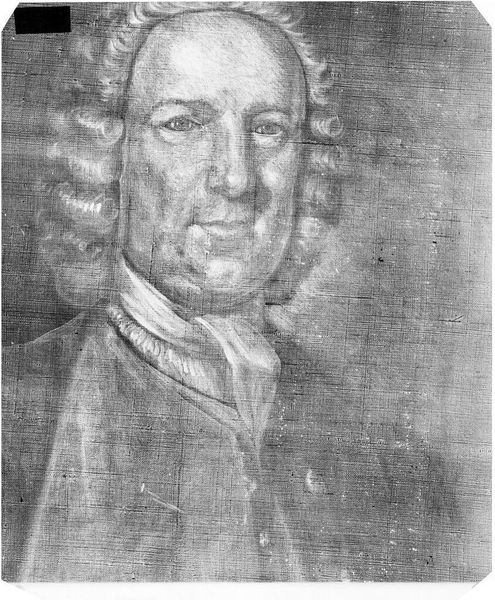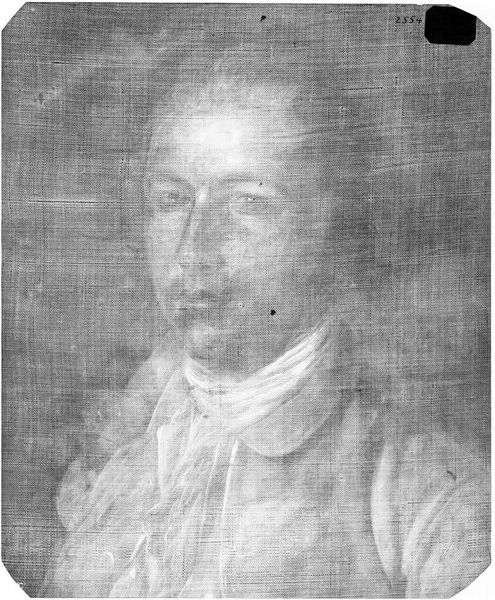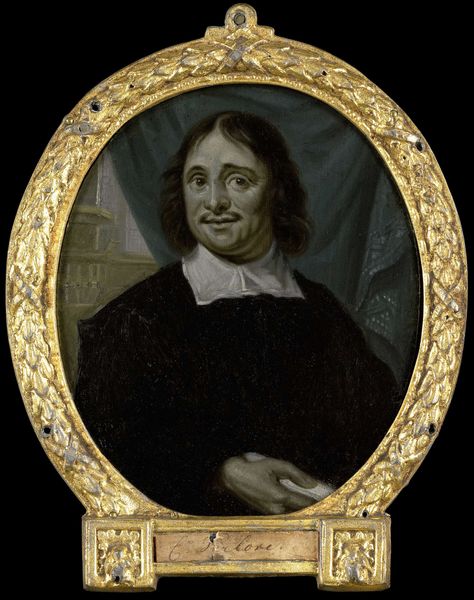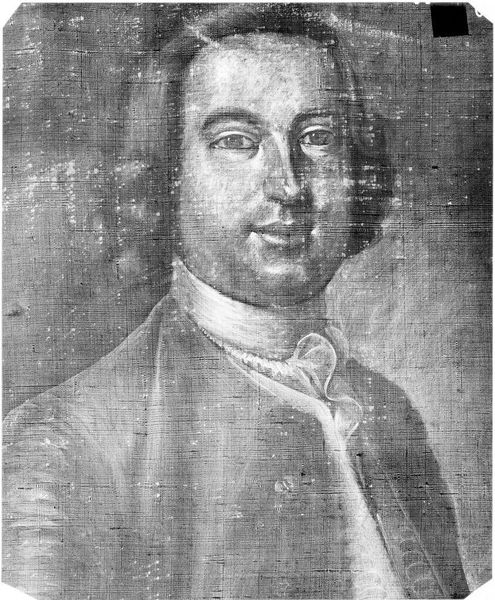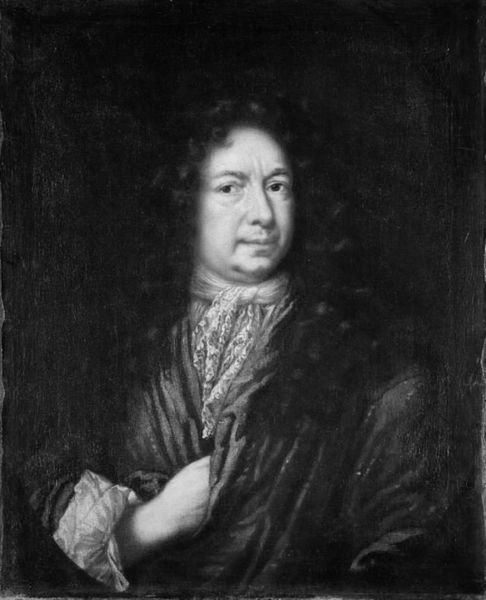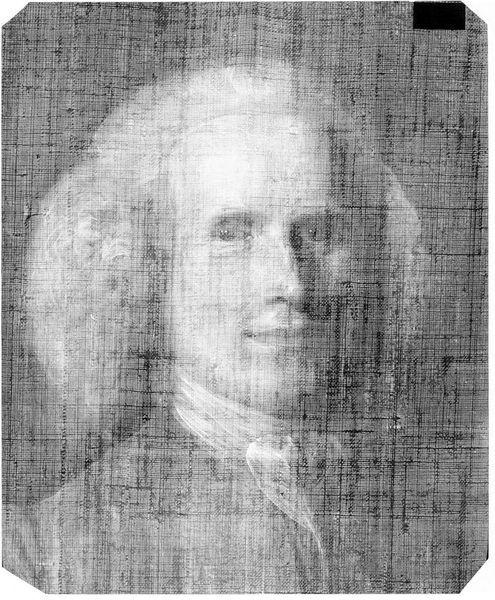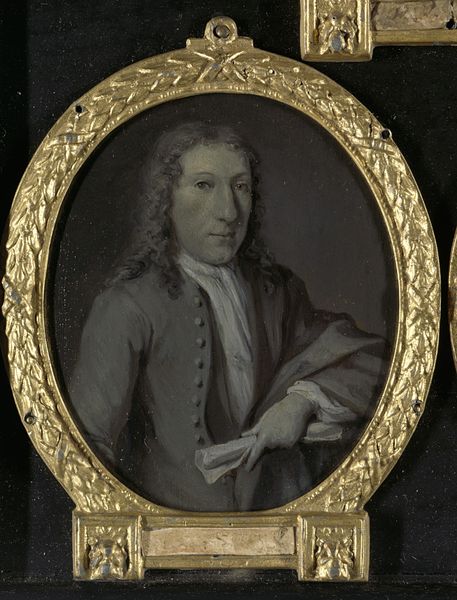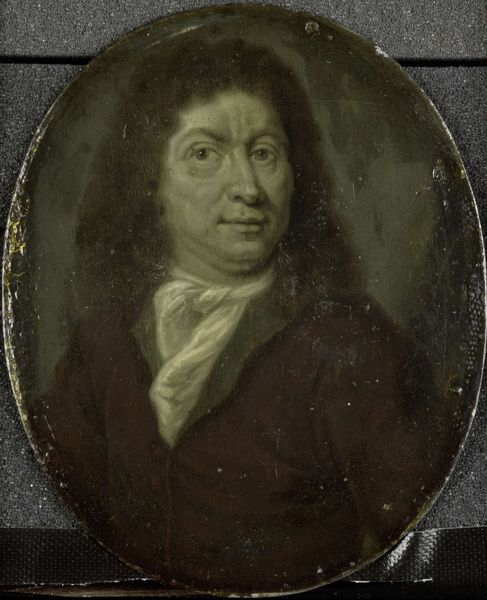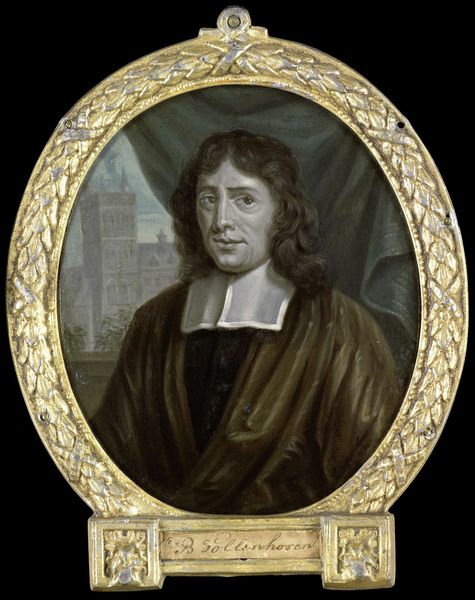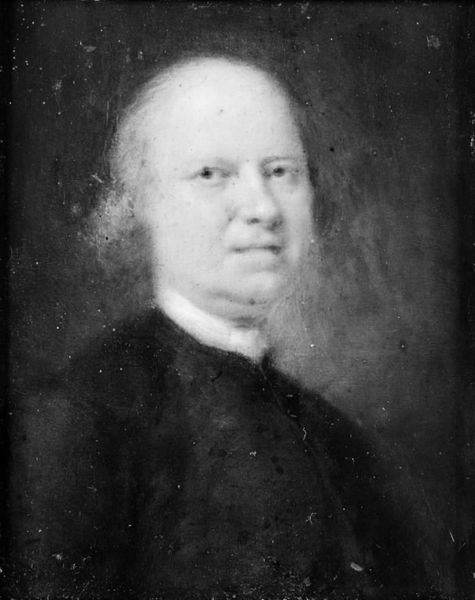
painting, oil-paint
#
portrait
#
baroque
#
painting
#
oil-paint
#
male portrait
#
black and white
#
realism
Dimensions: 42.5 cm (height) x 30 cm (width) (Netto)
Curator: Here we have *Portrait of a Man in a Black Suit* by Abraham Wuchters, estimated to have been created sometime between 1625 and 1682. It's an oil painting currently residing at the SMK, the Statens Museum for Kunst. Editor: Well, even in what appears to be monochrome, there is something so inviting about his gaze, wouldn't you agree? And the loose waves of his hair contrast so elegantly with what must have been exquisitely tailored clothing. Curator: Indeed. The subdued palette undoubtedly draws focus to the man's face. Portraits during this period were very carefully constructed symbols of status and character. Black dye was extremely costly, symbolizing prosperity and trade connections, and we see that confidence exuding. Editor: True. The act of sitting for a portrait signified privilege and wealth, but more than that, I’m interested in the physicality. We should be mindful that the very production of oil paint demanded specific pigments, labour, and that precious cloth from all over. This material reality really interests me when looking at class relations. Curator: A useful lens. I tend to fixate on the details. The slight tilt of the head indicates intellect and composure. His gaze projects not arrogance, but a subtle invitation. The sitter may very well have intended that he be depicted as cultured. Editor: Right, because all the individual labouring to procure these materials remains hidden under this surface level appreciation for the “cultured man”, and by “hiding”, it also keeps hidden this relationship between production and meaning. Curator: You suggest then, that there is something deliberately obscured. And to return to the immediate impression: black attire in art traditionally suggests solemnity. He must have wanted to present himself to us a model of erudition in posterity. Editor: Possibly, but think about it as raw material and then as signifiers. The man becomes a kind of commodity— consumed by us as image, obscuring the history that precedes his portrait's final presentation. It might not be such a somber experience once we factor in how much labor has gone to waste to bring him here. Curator: So a portrait meant to commemorate an individual's lasting legacy comes at the cost of erasing all other history... that's certainly food for thought. Thank you. Editor: My pleasure. Let's try again soon.
Comments
No comments
Be the first to comment and join the conversation on the ultimate creative platform.
